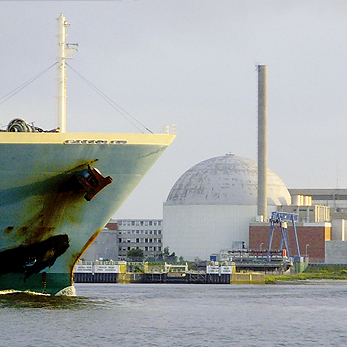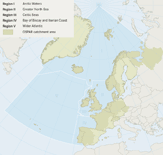The marine environment is exposed to radiation from both natural and artificial sources. Naturally occurring radionuclides (radioactive forms of elements) are derived from the weathering of minerals in the Earth’s crust and from cosmic rays, while artificial radionuclides are released to the marine environment from a variety of past and present human activities associated with the nuclear industry and military uses. These include the operation of nuclear power plants and nuclear fuel reprocessing plants, atmospheric nuclear weapons testing and fallout from the 1986 Chernobyl accident. Human activities have also led to elevated levels of naturally occurring radionuclides, such as those released from offshore oil and gas installations and the phosphate fertiliser industry. Other potential sources of radionuclides in seawater are former dump sites for nuclear waste and sunken nuclear submarines. Estuarine and marine sediments that have accumulated radionuclides over long periods can be an additional source long after discharges from the point sources have stopped. OSPAR works under the Radioactive Substances Strategy to reduce inputs and levels of radionuclides in order to protect the marine environment and its users.
OSPAR Strategy objectives for radioactive substances
- Prevent pollution of the maritime area from ionising radiation through progressive and substantial reductions of discharges, emissions and losses of radioactive substances.
- Reduce by 2020 discharges, emissions and losses of radioactive substances to levels where the additional concentrations in the marine environment above historic levels, resulting from such discharges, emissions and losses, are close to zero.
- The ultimate aim is of concentrations in the environment near background values for naturally occurring radioactive substances and close to zero for artificial radioactive substances. In achieving this objective, the legitimate uses of the sea, technical feasibility, and radiological impacts on man and biota should be taken into account.


